hypoxia « Search Results « Natural Resources News
Chesapeake Bay Hypoxia Report – May 2024
Lower oxygen conditions this spring consistent with yearly forecast model
Data collected by the Maryland Department of Natural Resources and Old Dominion University show that May 2024 dissolved oxygen conditions in the Chesapeake Bay mainstem of Maryland and Virginia were worse than average. The results are from samples collected during regular monitoring cruises conducted aboard research vessels.
The hypoxic water volume — waters with less than 2 mg/l oxygen — was 0.42 cubic miles during the 2024 mid-May monitoring cruise, compared to the May average (1985-2023) of 0.18 cubic miles. This May ranks as the sixth largest volume of hypoxic water on record for the respective time period. No anoxia – areas of water with less than 0.2 mg/l oxygen – was observed in the May 2024 monitoring cruise. Read more…
Chesapeake Bay 2023 Final Hypoxia Report
This summer’s dissolved oxygen levels in the Chesapeake Bay were much better than previous years
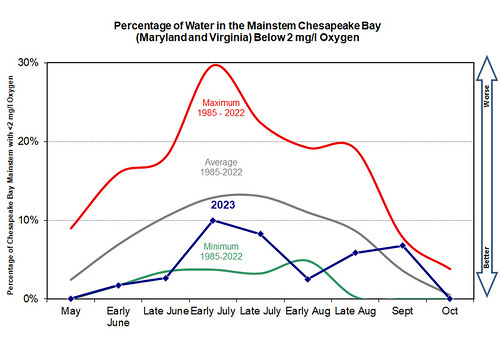 Water monitoring data collected by the Maryland Department of Natural Resources (DNR) and Old Dominion University show that dissolved oxygen conditions in the Chesapeake Bay mainstem of Maryland and Virginia were much better than average for May-October 2023.
Water monitoring data collected by the Maryland Department of Natural Resources (DNR) and Old Dominion University show that dissolved oxygen conditions in the Chesapeake Bay mainstem of Maryland and Virginia were much better than average for May-October 2023.
The hypoxic water volume — waters with less than 2 milligrams per liter (mg/l) oxygen — averaged 0.52 cubic miles during May-October 2023, compared to the historical average (1985-2022) of 0.97 cubic miles. This year had the lowest average hypoxic volume since monitoring began 39 years ago. Read more…
Chesapeake Bay Hypoxia Report – August 2023
Early August dissolved oxygen conditions best on record for time period
 Data collected by the Maryland Department of Natural Resources and Old Dominion University show that August 2023 dissolved oxygen conditions in the Chesapeake Bay mainstem of Maryland and Virginia continued to be much better than average.
Data collected by the Maryland Department of Natural Resources and Old Dominion University show that August 2023 dissolved oxygen conditions in the Chesapeake Bay mainstem of Maryland and Virginia continued to be much better than average.
The results are from samples collected during regular, twice-monthly monitoring cruises conducted by research vessels. Throughout the summer, the cruises have recorded hypoxic areas of the Bay – water with low enough dissolved oxygen to harm marine life – that have been smaller than those recorded in previous years. Read more…
Chesapeake Bay Hypoxia Report – July 2023
Dissolved oxygen conditions continue to be much better than average
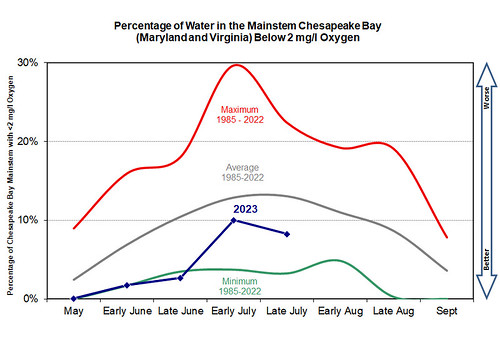 Data collected by the Maryland Department of Natural Resources and Old Dominion University show that July 2023 dissolved oxygen conditions in the Chesapeake Bay mainstem of Maryland and Virginia continued to be much better than average.
Data collected by the Maryland Department of Natural Resources and Old Dominion University show that July 2023 dissolved oxygen conditions in the Chesapeake Bay mainstem of Maryland and Virginia continued to be much better than average.
The results are from samples collected during regular, twice-monthly monitoring cruises conducted by research vessels. Read more…
Chesapeake Bay Hypoxia Report – June 2023
Dissolved oxygen conditions among the best recorded
 Data collected by the Maryland Department of Natural Resources and Old Dominion University show that June 2023 dissolved oxygen conditions in the Chesapeake Bay mainstem of Maryland and Virginia were much better than average. The results are from samples collected during regular monitoring cruises conducted by research vessels.
Data collected by the Maryland Department of Natural Resources and Old Dominion University show that June 2023 dissolved oxygen conditions in the Chesapeake Bay mainstem of Maryland and Virginia were much better than average. The results are from samples collected during regular monitoring cruises conducted by research vessels.
The hypoxic water volume — waters with less than 2 mg/l oxygen — was 0.22 and 0.33 cubic miles during the early and late June monitoring cruises, compared to early and late June averages of 0.87 and 1.30 cubic miles since 1985. This year’s data from early June ranks as the second smallest volume of hypoxic water volume on record and late June was the smallest volume for their respective time periods. No anoxia – areas of water with less than 0.2 mg/l oxygen – was observed in either June monitoring cruise. Read more…
Final Chesapeake Bay Hypoxia Report for 2022
Bay Dissolved Oxygen Conditions Better Than Average
 Water monitoring data collected by the Maryland Department of Natural Resources (DNR) and Old Dominion University show that dissolved oxygen conditions in the Chesapeake Bay mainstem of Maryland and Virginia were better than average for May-October 2022.
Water monitoring data collected by the Maryland Department of Natural Resources (DNR) and Old Dominion University show that dissolved oxygen conditions in the Chesapeake Bay mainstem of Maryland and Virginia were better than average for May-October 2022.
The hypoxic water volume — waters with less than 2 milligrams per liter (mg/l) oxygen — averaged 0.65 cubic miles during May-October 2022, compared to the historical average (1985-2021) of 0.79 cubic miles. 2022 ranked 10th best of 38 years of monitoring. Additionally, a seasonal average of 0.15 cubic miles of anoxia (waters with less than 0.2 mg/l oxygen) was observed versus a historical average of 0.14. Read more…
Chesapeake Bay Hypoxia Report – August 2022
2022 Oxygen Conditions Remain Better than Average
 Water monitoring data collected by the Maryland Department of Natural Resources (DNR) and Old Dominion University show that dissolved oxygen conditions in the Chesapeake Bay mainstem of Maryland and Virginia were slightly better than average in August 2022, with early and late August having less hypoxia than usual.
Water monitoring data collected by the Maryland Department of Natural Resources (DNR) and Old Dominion University show that dissolved oxygen conditions in the Chesapeake Bay mainstem of Maryland and Virginia were slightly better than average in August 2022, with early and late August having less hypoxia than usual.
The hypoxic water volume — waters with less than 2 mg/l oxygen — was 1.34 and 0.98 cubic miles during early and late August monitoring cruises, compared to historical early and late August averages (1985-2021) of 1.37 and 1.08 cubic miles. Read more…
Chesapeake Bay Hypoxia Report – July 2022
Conditions Were Positive to Average As Month Progressed
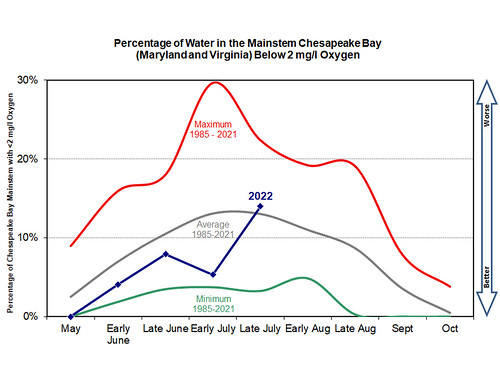 Data collected by the Maryland Department of Natural Resources (DNR) and Old Dominion University show that dissolved oxygen conditions in the Chesapeake Bay mainstem of Maryland and Virginia were mixed in July 2022, with early July hypoxic volumes well below average, and late July near average. The hypoxic water volume — waters with less than 2 mg/l oxygen — was 0.66 and 1.74 cubic miles during early and late July monitoring cruises, compared to historical early and late July averages (1985-2021) of 1.63 and 1.62 cubic miles. Read more…
Data collected by the Maryland Department of Natural Resources (DNR) and Old Dominion University show that dissolved oxygen conditions in the Chesapeake Bay mainstem of Maryland and Virginia were mixed in July 2022, with early July hypoxic volumes well below average, and late July near average. The hypoxic water volume — waters with less than 2 mg/l oxygen — was 0.66 and 1.74 cubic miles during early and late July monitoring cruises, compared to historical early and late July averages (1985-2021) of 1.63 and 1.62 cubic miles. Read more…
June 2022 Chesapeake Bay Hypoxia Report
Chesapeake Bay Dissolved Oxygen Conditions Better than Average
 Data collected by the Maryland Department of Natural Resources (DNR) and Old Dominion University show that dissolved oxygen conditions in the Chesapeake Bay mainstem of Maryland and Virginia were better than average in June 2022. The hypoxic water volume — waters with less than 2 mg/l oxygen — was 0.51 and 0.98 cubic miles during early and late June monitoring cruises, compared to historical early and late June averages (1985-2021) of 0.87 and 1.31 cubic miles.
Data collected by the Maryland Department of Natural Resources (DNR) and Old Dominion University show that dissolved oxygen conditions in the Chesapeake Bay mainstem of Maryland and Virginia were better than average in June 2022. The hypoxic water volume — waters with less than 2 mg/l oxygen — was 0.51 and 0.98 cubic miles during early and late June monitoring cruises, compared to historical early and late June averages (1985-2021) of 0.87 and 1.31 cubic miles.
During their respective time periods, the early June volume ranks as the 8th best on record and late June was 12th best. Additionally, a small volume of less than 0.1 cubic miles of anoxia – waters with less than 0.2 mg/l oxygen – was observed during the late June cruise. Hypoxia was essentially zero (0.0002 cubic miles) in May. Read more…
Chesapeake Bay Hypoxia Report – Year-End 2021
Divided Season Results in Near Average 2021 Hypoxia
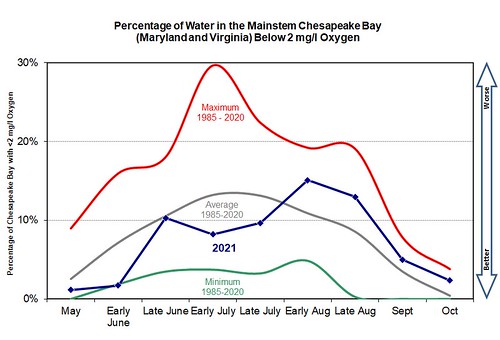 Monitoring of dissolved oxygen conditions in the Chesapeake Bay mainstem of Maryland and Virginia showed a tale of two different halves for the 2021 season. The Bay experienced below average hypoxia — areas with less than 2 mg/l of dissolved oxygen — from May through July, followed by above average hypoxic volumes August through October. When averaged over the full 2021 season, hypoxic volume was slightly below the historical seasonal average, consistent with forecasts made in the spring. Read more…
Monitoring of dissolved oxygen conditions in the Chesapeake Bay mainstem of Maryland and Virginia showed a tale of two different halves for the 2021 season. The Bay experienced below average hypoxia — areas with less than 2 mg/l of dissolved oxygen — from May through July, followed by above average hypoxic volumes August through October. When averaged over the full 2021 season, hypoxic volume was slightly below the historical seasonal average, consistent with forecasts made in the spring. Read more…
Chesapeake Bay Hypoxia Report – August 2021
Hypoxic Volumes Increased, Heat and Rain Likely Contributors
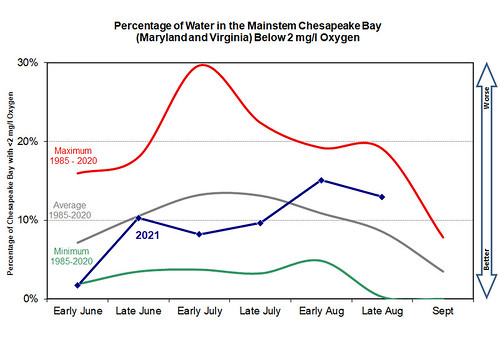 Data collected by the Maryland Department of Natural Resources (DNR) and Old Dominion University show that dissolved oxygen conditions in the Chesapeake Bay mainstem of Maryland and Virginia worsened in August following two better-than average months. The hypoxic water volume — areas with less than 2 mg/l oxygen — was 1.88 and 1.61 cubic miles during early and late August monitoring cruises, compared to historical early and late August averages (1985-2020) of 1.35 and 1.06 cubic miles.
Data collected by the Maryland Department of Natural Resources (DNR) and Old Dominion University show that dissolved oxygen conditions in the Chesapeake Bay mainstem of Maryland and Virginia worsened in August following two better-than average months. The hypoxic water volume — areas with less than 2 mg/l oxygen — was 1.88 and 1.61 cubic miles during early and late August monitoring cruises, compared to historical early and late August averages (1985-2020) of 1.35 and 1.06 cubic miles.
Additionally, in early and late August, within the mainstem Bay’s hypoxic waters, 0.76 and 0.51 cubic miles were anoxic — zones with less than 0.2 mg/l oxygen. Read more…
Chesapeake Bay Hypoxia Report — July 2021
Dissolved Oxygen Conditions Remain Better than Average Through July
 Data collected by the Maryland Department of Natural Resources (DNR) and Old Dominion University show that dissolved oxygen conditions in the Chesapeake Bay mainstem of Maryland and Virginia continued to be better than average in July. The hypoxic water volume — areas with less than 2 mg/l oxygen — was 1.02 and 1.20 cubic miles during early and late July monitoring cruises, compared to historical early and late July averages (1985-2020) of 1.64 and 1.63 cubic miles. The early and late July reports rank as the 7th and 8th best in their respective time periods, out of a total of 37 years of monitoring. The effects of Tropical Storm Elsa were not captured in July’s monitoring, as early July sampling occurred just prior to the storm passing through the Bay watershed. Read more…
Data collected by the Maryland Department of Natural Resources (DNR) and Old Dominion University show that dissolved oxygen conditions in the Chesapeake Bay mainstem of Maryland and Virginia continued to be better than average in July. The hypoxic water volume — areas with less than 2 mg/l oxygen — was 1.02 and 1.20 cubic miles during early and late July monitoring cruises, compared to historical early and late July averages (1985-2020) of 1.64 and 1.63 cubic miles. The early and late July reports rank as the 7th and 8th best in their respective time periods, out of a total of 37 years of monitoring. The effects of Tropical Storm Elsa were not captured in July’s monitoring, as early July sampling occurred just prior to the storm passing through the Bay watershed. Read more…
June 2021 Chesapeake Bay Hypoxia Report
Dissolved Oxygen Best on Record for Early June
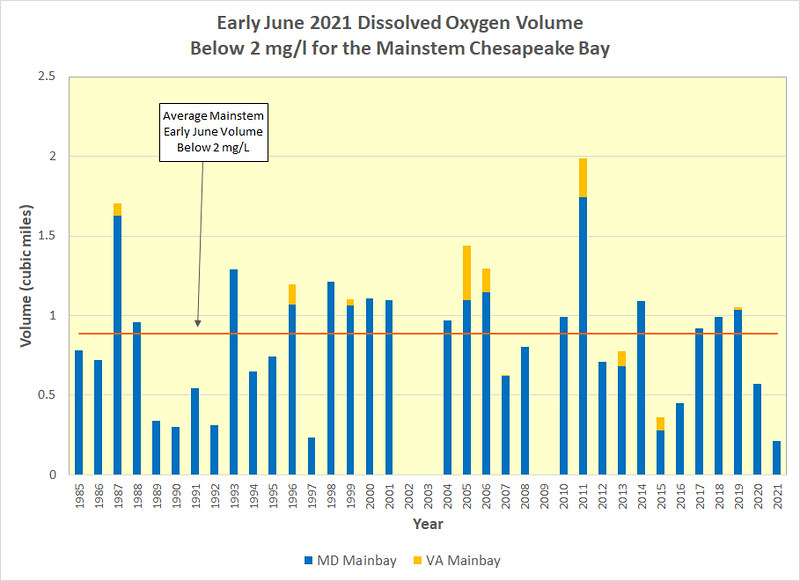 Data collected by the Maryland Department of Natural Resources (DNR) and Old Dominion University show that dissolved oxygen conditions in the Chesapeake Bay mainstem of Maryland and Virginia were better than average in June 2021. The hypoxic water volume — areas with less than 2 mg/l oxygen — was 0.21 and 1.28 cubic miles during early and late June monitoring cruises, compared to historical early and late June averages (1985-2020) of 0.89 and 1.31 cubic miles. The early June report ranks as the best on record, and late June was slightly better than average. Read more…
Data collected by the Maryland Department of Natural Resources (DNR) and Old Dominion University show that dissolved oxygen conditions in the Chesapeake Bay mainstem of Maryland and Virginia were better than average in June 2021. The hypoxic water volume — areas with less than 2 mg/l oxygen — was 0.21 and 1.28 cubic miles during early and late June monitoring cruises, compared to historical early and late June averages (1985-2020) of 0.89 and 1.31 cubic miles. The early June report ranks as the best on record, and late June was slightly better than average. Read more…
September 2020 Hypoxia Report
Maryland Summer Oxygen Conditions Second-best on Record
 Maryland Department of Natural Resources (DNR) monitoring data show that summer average dissolved oxygen conditions in the Maryland portion of the Chesapeake Bay mainstem were the second best on record since 1985. The average hypoxic volume — areas with less than 2 mg/l oxygen — of the eight 2020 summer cruises was 0.63 cubic miles, compared to a historical summer average from 1985-2019 of 0.84 cubic miles. Before this year, 2012 was the only year that had a lower average hypoxic volume of 0.62 cubic miles.
Maryland Department of Natural Resources (DNR) monitoring data show that summer average dissolved oxygen conditions in the Maryland portion of the Chesapeake Bay mainstem were the second best on record since 1985. The average hypoxic volume — areas with less than 2 mg/l oxygen — of the eight 2020 summer cruises was 0.63 cubic miles, compared to a historical summer average from 1985-2019 of 0.84 cubic miles. Before this year, 2012 was the only year that had a lower average hypoxic volume of 0.62 cubic miles.
During 2020, every cruise except late July had better than average oxygen conditions for its time period. No anoxic zones — areas with less than 0.2 mg/l oxygen — were observed in the mainstem bay in either Maryland or Virginia for the year. Read more…
Late August 2020 Hypoxia Report
Oxygen Conditions Better than Average
 Maryland Department of Natural Resources monitoring data show that dissolved oxygen conditions in the Maryland portion of the Chesapeake Bay mainstem were better than average in late August 2020. The hypoxic water volume — areas with less than 2 mg/l oxygen — was 0.79 cubic miles compared to a historical late August average (1985-2019) of 1 cubic mile. Oxygen conditions continued to be better than average in 2020, with only late July results exceeding the long-term average.
Maryland Department of Natural Resources monitoring data show that dissolved oxygen conditions in the Maryland portion of the Chesapeake Bay mainstem were better than average in late August 2020. The hypoxic water volume — areas with less than 2 mg/l oxygen — was 0.79 cubic miles compared to a historical late August average (1985-2019) of 1 cubic mile. Oxygen conditions continued to be better than average in 2020, with only late July results exceeding the long-term average.
Late August conditions ranked 12th best out of the 36-year monitoring record for the period. No hypoxia was observed in Virginia Chesapeake Bay mainstem waters. No anoxic zones — areas with less than 0.2 mg/l oxygen — were observed in the Maryland or Virginia mainstem. Read more…
Early August 2020 Hypoxia Report
Conditions Show Improvement Following Tropical Storm Isaias
 Maryland Department of Natural Resources monitoring data show that dissolved oxygen conditions in the Maryland portion of the Chesapeake Bay mainstem were better than average in early August 2020. The hypoxic water volume — waters with less than 2 mg/l oxygen — was 0.92 cubic miles compared to a historical early August average (1985-2019) of 1.2 cubic miles. Oxygen conditions improved from late July to early August, with the early August hypoxic volume being nearly half the volume observed in late July. Early August conditions ranked 10th best out of the 36-year monitoring record for the period. An additional 0.24 cubic miles of hypoxia was observed in Virginia Chesapeake Bay mainstem waters. No anoxic zones — areas with less than 0.2 mg/l oxygen — were observed in the Maryland or Virginia mainstem.eyes Read more…
Maryland Department of Natural Resources monitoring data show that dissolved oxygen conditions in the Maryland portion of the Chesapeake Bay mainstem were better than average in early August 2020. The hypoxic water volume — waters with less than 2 mg/l oxygen — was 0.92 cubic miles compared to a historical early August average (1985-2019) of 1.2 cubic miles. Oxygen conditions improved from late July to early August, with the early August hypoxic volume being nearly half the volume observed in late July. Early August conditions ranked 10th best out of the 36-year monitoring record for the period. An additional 0.24 cubic miles of hypoxia was observed in Virginia Chesapeake Bay mainstem waters. No anoxic zones — areas with less than 0.2 mg/l oxygen — were observed in the Maryland or Virginia mainstem.eyes Read more…
Late July 2020 Hypoxia Report
Record July temperatures drive worse than average Bay oxygen conditions
Maryland Department of Natural Resources (DNR) monitoring data show that dissolved oxygen conditions in the Maryland portion of the Chesapeake Bay mainstem were worse than average in late July 2020. The hypoxic water volume (areas with less than 2 mg/l oxygen) was 1.75 cubic miles compared to a historical late July average (1985-2019) of 1.36 cubic miles. Virginia did not conduct late July Chesapeake Bay mainstem sampling. No anoxic zones (areas with less than 0.2 mg/l oxygen) were observed in the Maryland mainstem.
Based on historical data, bay hypoxia volumes normally peak during the early portion of July, but with Maryland experiencing its warmest July on record (NOAA, https://www.ncdc.noaa.gov/cag/statewide/mapping/18/tavg/202007/1/rank), conditions were ideal for promoting hypoxia throughout the month. Warmer waters hold less oxygen, and warmer surface waters can create a barrier to oxygen mixing into deep waters of the bay.
Maryland’s water quality data can be further explored with a variety of online tools at the Department’s Eyes on the Bay website (eyesonthebay.dnr.maryland.gov).
In mid-June, the EPA Chesapeake Bay Program, United States Geological Survey, University of Maryland Center for Environmental Science and University of Michigan scientists released their prediction for slightly smaller than average 2020 hypoxic conditions based on slightly less than average water and nitrogen flows into the bay from January – May 2020.
Crabs, fish, oysters and other creatures in the Chesapeake Bay require oxygen to survive. Scientists and natural resource managers study the volume and duration of bay hypoxia to determine possible impacts to bay life. Each year (June-September), the Maryland Department of Natural Resources computes these volumes from data collected by Maryland and Virginia monitoring teams during twice-monthly monitoring cruises. Data collection is funded by these states and the Environmental Protection Agency’s Chesapeake Bay Program. Bay hypoxia monitoring and reporting will continue through the summer.
Early July 2020 Hypoxia Report
 Maryland Department of Natural Resources monitoring data show that dissolved oxygen conditions in the Maryland portion of the Chesapeake Bay mainstem were average in early July 2020. The hypoxic water volume — waters with less than 2 mg/l oxygen — was 1.35 cubic miles compared to a historical early July average (1985-2019) of 1.38 cubic miles. Low dissolved oxygen extended into the Virginia Chesapeake Bay mainstem for an additional 0.35 cubic miles of hypoxia, for a total baywide estimate of 1.7 cubic miles. Based on historical data, bay hypoxia volumes historically peak during the early portion of July. No anoxic zones — areas with less than 0.2 mg/l oxygen — were observed in the Maryland or Virginia bay mainstem.
Maryland Department of Natural Resources monitoring data show that dissolved oxygen conditions in the Maryland portion of the Chesapeake Bay mainstem were average in early July 2020. The hypoxic water volume — waters with less than 2 mg/l oxygen — was 1.35 cubic miles compared to a historical early July average (1985-2019) of 1.38 cubic miles. Low dissolved oxygen extended into the Virginia Chesapeake Bay mainstem for an additional 0.35 cubic miles of hypoxia, for a total baywide estimate of 1.7 cubic miles. Based on historical data, bay hypoxia volumes historically peak during the early portion of July. No anoxic zones — areas with less than 0.2 mg/l oxygen — were observed in the Maryland or Virginia bay mainstem.
Maryland’s water quality data can be further explored with a variety of online tools at the Department’s Eyes on the Bay website. Read more…
June 2020 Hypoxia Report
 Maryland Department of Natural Resources monitoring data show that dissolved oxygen conditions in the Maryland portion of the Chesapeake Bay mainstem continued to be better than average in June 2020. The hypoxic water volume — waters with less than 2 mg/l oxygen — was 0.56 and 0.90 cubic miles, respectively, during early and late June monitoring cruises, compared to historical (1985-2019) early and late June averages of 0.93 and 1.13 cubic miles, respectively. Both hypoxic volumes rank within the top third of best results observed in the historical record within their respective time frames. Read more…
Maryland Department of Natural Resources monitoring data show that dissolved oxygen conditions in the Maryland portion of the Chesapeake Bay mainstem continued to be better than average in June 2020. The hypoxic water volume — waters with less than 2 mg/l oxygen — was 0.56 and 0.90 cubic miles, respectively, during early and late June monitoring cruises, compared to historical (1985-2019) early and late June averages of 0.93 and 1.13 cubic miles, respectively. Both hypoxic volumes rank within the top third of best results observed in the historical record within their respective time frames. Read more…
May 2020 Hypoxia Report
 Maryland Department of Natural Resources monitoring data show that dissolved oxygen conditions in the Maryland portion of the Chesapeake Bay mainstem were better than expected in May 2020. The hypoxic water volume — waters with less than 2 mg/l oxygen — was 0.027 cubic miles, which is well below the May 1985-2019 average of 0.25 cubic miles, and an improvement from the 1.12 cubic miles of hypoxia observed in May 2019. No anoxic zones— waters with less than 0.2 mg/l oxygen — were observed. Read more…
Maryland Department of Natural Resources monitoring data show that dissolved oxygen conditions in the Maryland portion of the Chesapeake Bay mainstem were better than expected in May 2020. The hypoxic water volume — waters with less than 2 mg/l oxygen — was 0.027 cubic miles, which is well below the May 1985-2019 average of 0.25 cubic miles, and an improvement from the 1.12 cubic miles of hypoxia observed in May 2019. No anoxic zones— waters with less than 0.2 mg/l oxygen — were observed. Read more…
September Hypoxia Report
 Maryland Department of Natural Resources monitoring data show that dissolved oxygen conditions in the Maryland portion of the Chesapeake Bay mainstem were higher than average in September. The hypoxic water volume — waters with less than 2 mg/l oxygen — was 0.73 cubic miles in September, down from the 1.06 cubic miles seen in late August, but greater than the historical 0.41 cubic mile average for September. No anoxia — waters with less than 0.2 mg/l oxygen — was detected. This ranked as the fifth-largest Maryland September hypoxia volume since monitoring began in 1985. Read more…
Maryland Department of Natural Resources monitoring data show that dissolved oxygen conditions in the Maryland portion of the Chesapeake Bay mainstem were higher than average in September. The hypoxic water volume — waters with less than 2 mg/l oxygen — was 0.73 cubic miles in September, down from the 1.06 cubic miles seen in late August, but greater than the historical 0.41 cubic mile average for September. No anoxia — waters with less than 0.2 mg/l oxygen — was detected. This ranked as the fifth-largest Maryland September hypoxia volume since monitoring began in 1985. Read more…
Late August 2019 Hypoxia Report
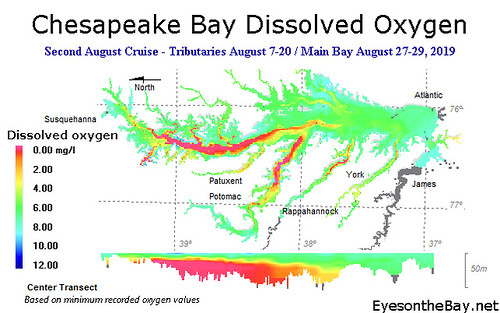 Maryland Department of Natural Resources monitoring data show that dissolved oxygen conditions in the Maryland portion of the Chesapeake Bay mainstem were near average in late August. This is a significant improvement from hypoxia results observed earlier this summer. The hypoxic water volume (waters with less than 2 mg/l oxygen) was 1.06 cubic miles in late August, down from the 1.77 cubic miles seen in early August. A small volume (0.006 cubic miles) of anoxia (waters with less than 0.2 mg/l oxygen) was detected. Read more…
Maryland Department of Natural Resources monitoring data show that dissolved oxygen conditions in the Maryland portion of the Chesapeake Bay mainstem were near average in late August. This is a significant improvement from hypoxia results observed earlier this summer. The hypoxic water volume (waters with less than 2 mg/l oxygen) was 1.06 cubic miles in late August, down from the 1.77 cubic miles seen in early August. A small volume (0.006 cubic miles) of anoxia (waters with less than 0.2 mg/l oxygen) was detected. Read more…
Early August 2019 Hypoxia Report
 Maryland Department of Natural Resources monitoring data show that dissolved oxygen conditions in the Maryland portion of the Chesapeake Bay mainstem were larger than average in early August. The hypoxic water volume (areas with less than 2 mg/l oxygen) was 1.77 cubic miles in early August, down from the 2.01 cubic miles seen in late July, but significantly higher than the 1985-2018 early August average of 1.19 cubic miles. The hypoxic volumes ranked third-largest since 1985 for the early August time period. Read more…
Maryland Department of Natural Resources monitoring data show that dissolved oxygen conditions in the Maryland portion of the Chesapeake Bay mainstem were larger than average in early August. The hypoxic water volume (areas with less than 2 mg/l oxygen) was 1.77 cubic miles in early August, down from the 2.01 cubic miles seen in late July, but significantly higher than the 1985-2018 early August average of 1.19 cubic miles. The hypoxic volumes ranked third-largest since 1985 for the early August time period. Read more…
July 2019 Hypoxia Report
 Maryland Department of Natural Resources monitoring data show that dissolved oxygen conditions in the Maryland portion of the Chesapeake Bay mainstem were larger than average in July, as the result of many factors. The hypoxic water volume (areas with less than 2 mg/l oxygen) was 1.92 cubic miles in early July and 2.01 cubic miles in late July. The early July 1985-2018 average hypoxic volume is 1.36 cubic miles, and late July is 1.34 cubic miles. The most recent hypoxic volumes were respectively the fourth-largest for early July and second-largest for late July since 1985.
Maryland Department of Natural Resources monitoring data show that dissolved oxygen conditions in the Maryland portion of the Chesapeake Bay mainstem were larger than average in July, as the result of many factors. The hypoxic water volume (areas with less than 2 mg/l oxygen) was 1.92 cubic miles in early July and 2.01 cubic miles in late July. The early July 1985-2018 average hypoxic volume is 1.36 cubic miles, and late July is 1.34 cubic miles. The most recent hypoxic volumes were respectively the fourth-largest for early July and second-largest for late July since 1985.
Larger than average hypoxia was predicted for this summer in part due to massive rainfall causing high flows into the Chesapeake Bay the past year, which delivered higher nutrient loads. Those nutrients fuel algal blooms, which die and are consumed by bacteria, which then deplete oxygen in bottom waters. Also, average winds were generally low in July, which prevented oxygen from mixing into deeper waters. Read more…
Late June 2019 Hypoxia Report
 Maryland Department of Natural Resources monitoring shows that dissolved oxygen conditions in the state’s portion of the Chesapeake Bay mainstem were better than expected in late June. The hypoxic water volume — areas with less than 2 mg/l oxygen — was 0.69 cubic miles, which is well below the late June 1985-2018 average of 1.15 cubic miles, and an improvement from the 1.13 cubic miles of hypoxia observed in early June. No anoxic zones — areas with less than 0.2 mg/l oxygen — were observed. Read more…
Maryland Department of Natural Resources monitoring shows that dissolved oxygen conditions in the state’s portion of the Chesapeake Bay mainstem were better than expected in late June. The hypoxic water volume — areas with less than 2 mg/l oxygen — was 0.69 cubic miles, which is well below the late June 1985-2018 average of 1.15 cubic miles, and an improvement from the 1.13 cubic miles of hypoxia observed in early June. No anoxic zones — areas with less than 0.2 mg/l oxygen — were observed. Read more…
Early June 2019 Hypoxia Report

The Maryland Department of Natural Resources Research Vessel Kehrin is used for summer hypoxia monitoring.
Dissolved oxygen conditions in the Maryland portion of the Chesapeake Bay mainstem were slightly above the long-term average in early June. The hypoxic water volume — areas with less than 2 mg/l oxygen — was 1.14 cubic miles, which is slightly above the early June 1985-2018 average of 0.93 cubic miles and similar to levels in 2017 and 2018.
A significant amount of hypoxia was also observed during May. Hypoxia was not observed in Virginia’s portion of the bay, and no anoxic zones — areas with less than 0.2 mg/l oxygen — were detected in the mainstem bay in either Maryland or Virginia.
The observed early June and May hypoxia conditions are likely attributable to near record high flows in 2018 that continued into the spring of 2019.
Summer 2018 Hypoxia Report
Average Year for Chesapeake Bay Dissolved Oxygen
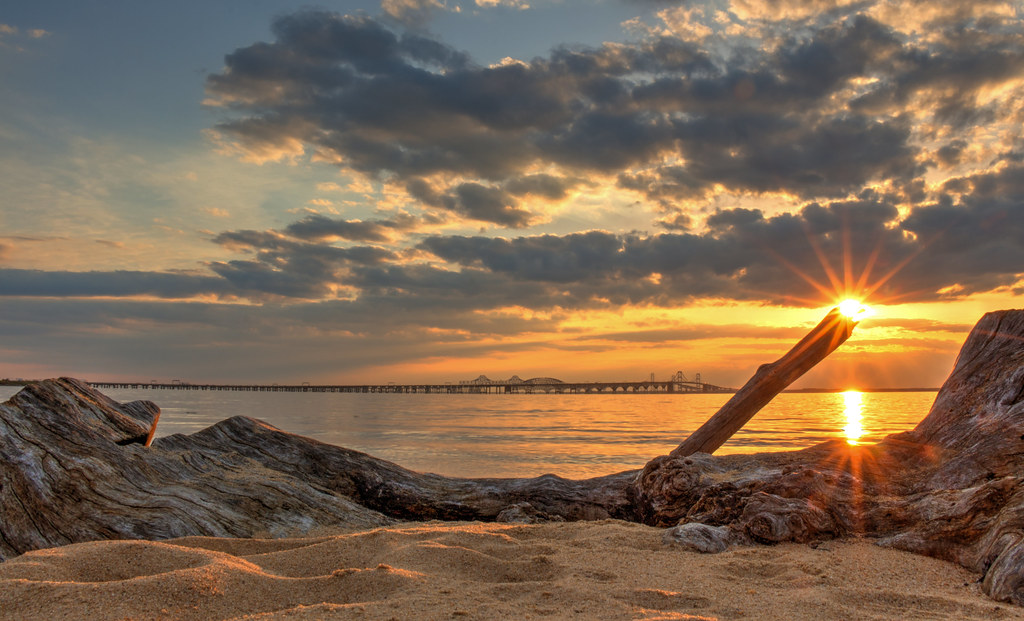
Terrapin Park Driftwood Sunset by Mark Dignen
Dissolved oxygen conditions for the Maryland portion of Chesapeake Bay for the summer of 2018 were average compared to the long-term average from 1985-2017, reports the Maryland Department of Natural Resources. Low dissolved oxygen volume averaged 0.97 cubic miles from June through September.
Crabs, fish, oysters and other creatures require oxygen to survive. Scientists and natural resource managers study the volume and duration of bay hypoxia to determine possible impacts to bay life. Each year from June through September, the department computes these volumes from data collected by Maryland and Virginia monitoring teams. Read more…
August 2018 Hypoxia Report
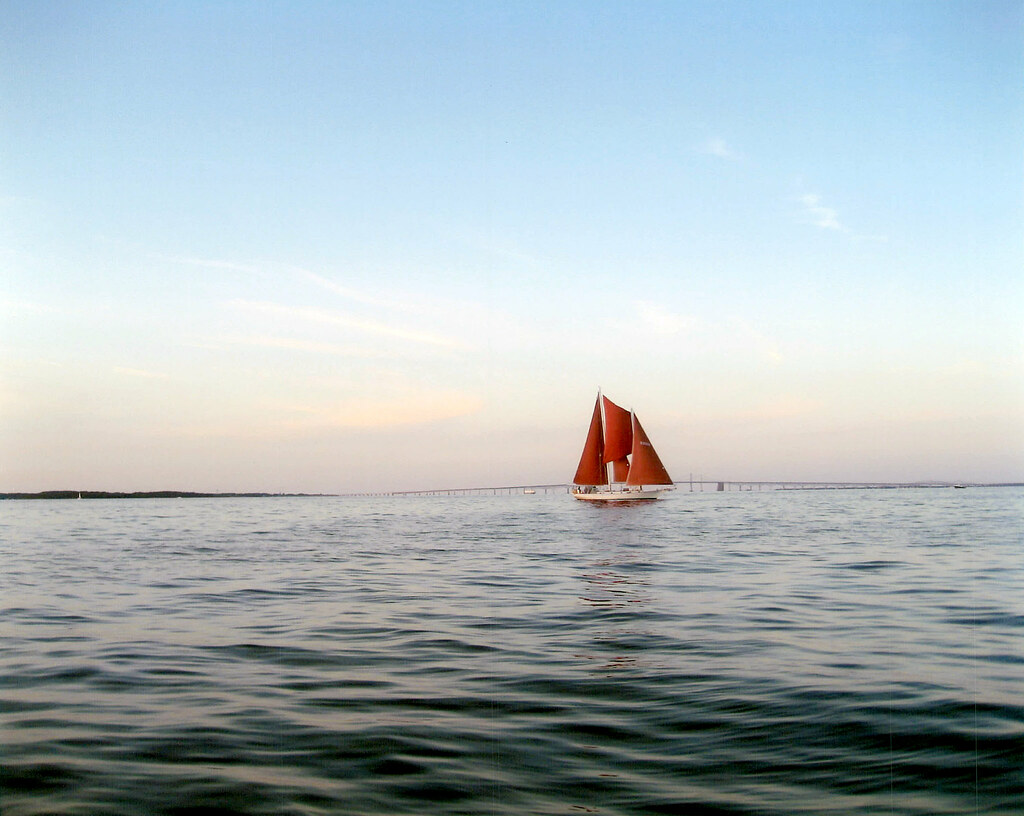
Sunset Sailing on the Chesapeake Bay by Toni Quigley
Dissolved oxygen conditions for Maryland’s portion of Chesapeake Bay returned to near average for the month of August, reports the Maryland Department of Natural Resources. The department tracks hypoxia throughout the summer during twice monthly monitoring cruises.
Low dissolved oxygen volume was at a record low (0.26 cubic miles) in late July, due to sustained winds and high flows from torrential rainfalls in mid-to-late July. As stormy weather subsided, and warmer days returned, hypoxic water volume (areas with less than 2 mg/L oxygen) rose to 1.08 cubic miles in early August, and 1.26 cubic miles in late August. Warmer waters hold less oxygen, and as freshwater flows subsided, water column stratification increased, making it more difficult for oxygen to mix into lower depths.
The hypoxic zone appeared to recede northward from early-to-late August, but it should be noted that the station at the Maryland/Virginia line was not sampled in late August due to high winds, which could result in a lower estimate of hypoxic volume for bay waters. Read more…
Late July 2018 Hypoxia Report
Heavy Rainfall and Sustained Winds Helped Produce Best Recorded Results Ever
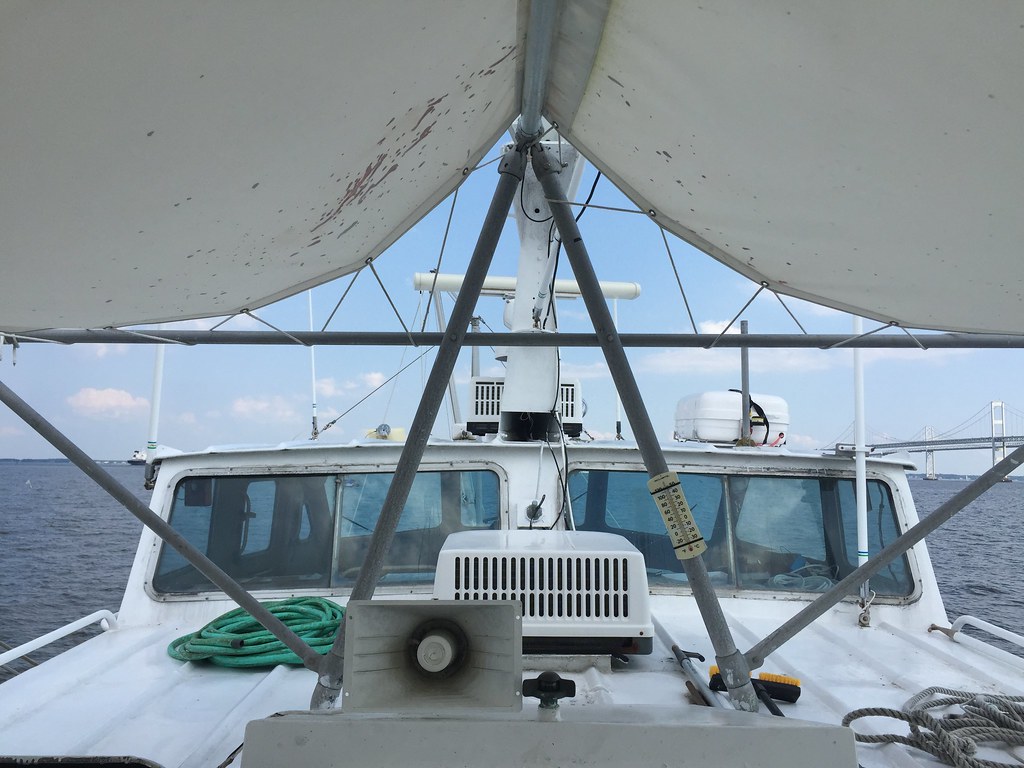 Due to extreme summer weather, dissolved oxygen conditions in Maryland’s portion of the Chesapeake Bay mainstem were the best ever observed in late July, reports the Maryland Department to Natural Resources. The department tracks hypoxia throughout the summer during twice monthly monitoring cruises.
Due to extreme summer weather, dissolved oxygen conditions in Maryland’s portion of the Chesapeake Bay mainstem were the best ever observed in late July, reports the Maryland Department to Natural Resources. The department tracks hypoxia throughout the summer during twice monthly monitoring cruises.
The hypoxic water volume (areas with less than 2 mg/L oxygen) was 0.26 cubic miles.*
Early July 2018 Hypoxia Report

Dissolved oxygen conditions in Maryland’s portion of the Chesapeake Bay mainstem improved in early July, according to the Maryland Department of Natural Resources. The department tracks hypoxia throughout the summer during twice monthly monitoring cruises.
The hypoxic water volume (areas with less than 2 mg/l oxygen) was 1.05 cubic miles, nearly 0.6 cubic miles less than in late June, and 0.33 cubic miles less than the early July average. No additional hypoxic volume was observed in Virginia’s portion of Chesapeake Bay, and no anoxic zones (areas with less than 0.2 mg/l oxygen) were detected in the mainstem. Read more…
Late June 2018 Hypoxia Report
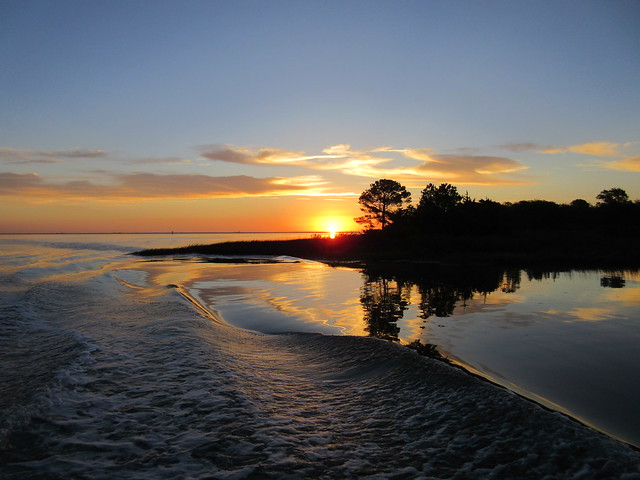
by Peter Zitta
As anticipated, dissolved oxygen conditions in Maryland’s portion of the Chesapeake Bay mainstem worsened in late June.
During its twice monthly monitoring cruises, the Maryland Department of Natural Resources found that hypoxic water volume (areas with less than 2 mg/L oxygen) was 1.63 cubic miles, which is 42 percent greater than the late June average of 1.15 cubic miles, and an increase of 0.63 cubic miles from early June. Read more…
Early June 2018 Hypoxia Report
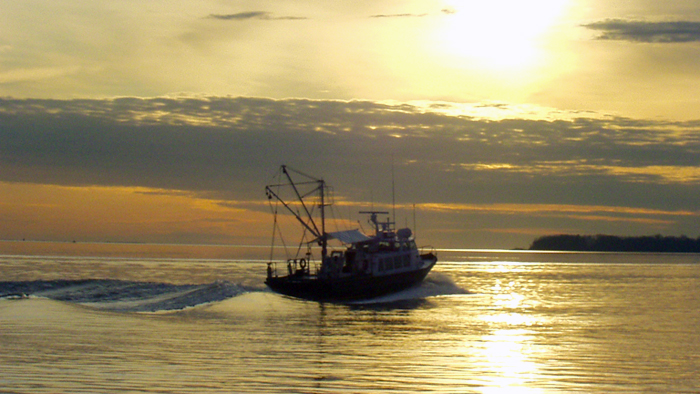
Maryland Research Vessel Kehrin
Maryland and Virginia scientists have begun regularly collecting oxygen data as they monitor the health of Chesapeake Bay waters, and track the states’ progress toward restoring the treasured Chesapeake.
The Maryland Department of Natural Resources will track bay oxygen levels throughout the summer during twice-monthly monitoring cruises.
Summer 2017 Hypoxia Report
Maryland’s Water Quality Monitoring Data Indicates Second Best Year on Record
Dissolved oxygen conditions in Maryland’s Chesapeake Bay mainstem were much better than average this summer, according to Maryland Department of Natural Resources.
The results show that 2017 had the second-smallest Chesapeake Bay hypoxic volume (dissolved oxygen concentrations below two milligrams per liter) since 1985, for the regions and times where water quality monitoring data could be collected. This summer had an average of 13.6 percent of sampled waters with hypoxia. The best year on record was 2012 with 13.3 percent. The average for 1985-2017 is 18.9 percent.
For September 2017, the Chesapeake Bay hypoxic water volume was 0.06 cubic miles, which is much smaller than the September 1985-2016 average of 0.35 cubic miles. Read more…
Late August 2017 Hypoxia Report
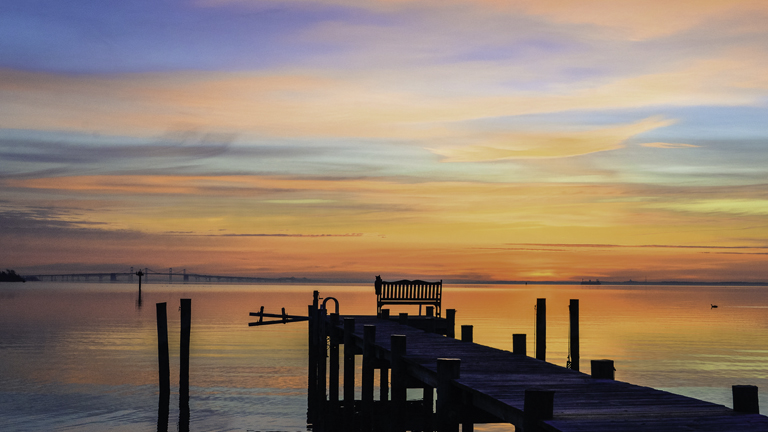
photo by Anne Weathersby
Dissolved oxygen conditions in a portion of Maryland’s Chesapeake Bay mainstem were better than average for late August, reports the Maryland Department of Natural Resources.
The hypoxic water volume (areas with less than 2 mg/l oxygen) in the study area was 0.33 cubic miles, which is much smaller than the late August 1985-2016 average of 0.80 cubic miles for that reduced area. Crabs, fish, oysters and other creatures require oxygen to survive with levels above 5 mg/l considered optimal to support aquatic health.
Early August 2017 Hypoxia Report
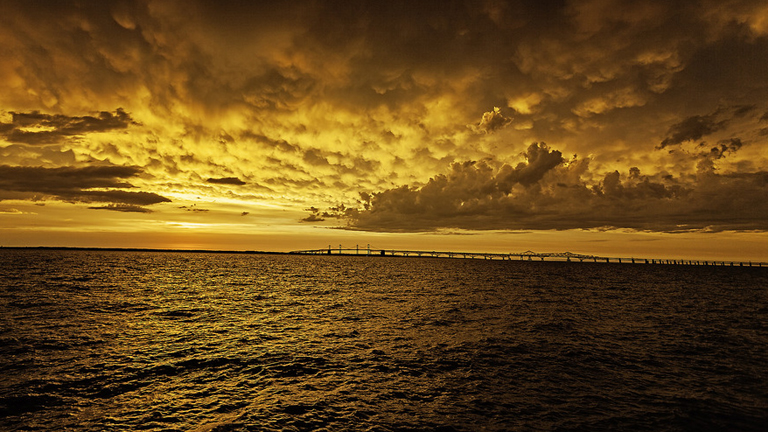
photo by by Krystle Chick
Dissolved oxygen conditions in Maryland’s portion of the Chesapeake Bay mainstem were much better than average for early August, reports the Maryland Department of Natural Resources.
The hypoxic water volume (areas with less than 2 mg/l oxygen) was 0.91 cubic miles, which is much smaller than the early August 1985-2016 average of 1.31 cubic miles. No anoxic zones (areas with less than 0.2 mg/l oxygen) were detected.
Late July 2017 Hypoxia Report

photo by by Krystle Chick
Due to weather and other factors that influenced sampling, there will be no official late-July Maryland Chesapeake Bay hypoxia volume estimation.
Early July 2017 Hypoxia Report

photo by by Krystle Chick
Dissolved oxygen conditions in Maryland’s portion of the Chesapeake Bay mainstem were much better than average for early July, reports the Maryland Department of Natural Resources.
The hypoxic water volume (areas with less than 2 mg/l oxygen) was 0.78 cubic miles, which is much smaller than the early July 1985-2016 average of 1.3 cubic miles. No anoxic zones (areas with less than 0.2 mg/l oxygen) were detected. Crabs, fish, oysters and other creatures require oxygen to survive with levels above 5 mg/l considered optimal to support aquatic health. Read more…
Late June 2017 Hypoxia Report

photo by by Krystle Chick
Dissolved oxygen conditions in the Maryland portion of the Chesapeake Bay mainstem continued to be near average in late June, reports the Maryland Department of Natural Resources. The hypoxic water volume (areas with less than 2 mg/l oxygen) was 1.05 cubic miles, which is slightly below the late June 1985-2016 average of 1.09 cubic miles. No anoxic zones (areas with less than 0.2 mg/l oxygen) were detected.
Hypoxia in the bay extended from south of the Patapsco River to north of the York River, in waters about 25 feet below the surface to the bottom. Read more…
Early June 2017 Hypoxia Report
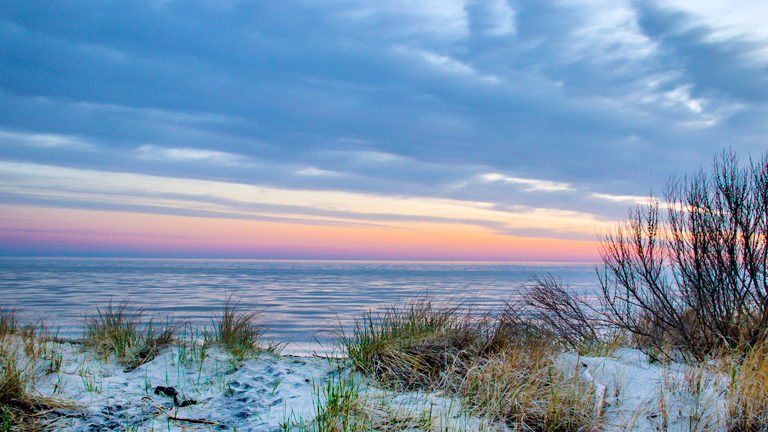
photo by Elizabeth Davis
Dissolved oxygen conditions in the Maryland portion of the Chesapeake Bay mainstem were near average in early June. Read more…
Researchers Prepare for Blue Crab Stock Assessment To Help Guide Future Management
Multi-year analysis to look at questions around juvenile recruitment, environmental factors
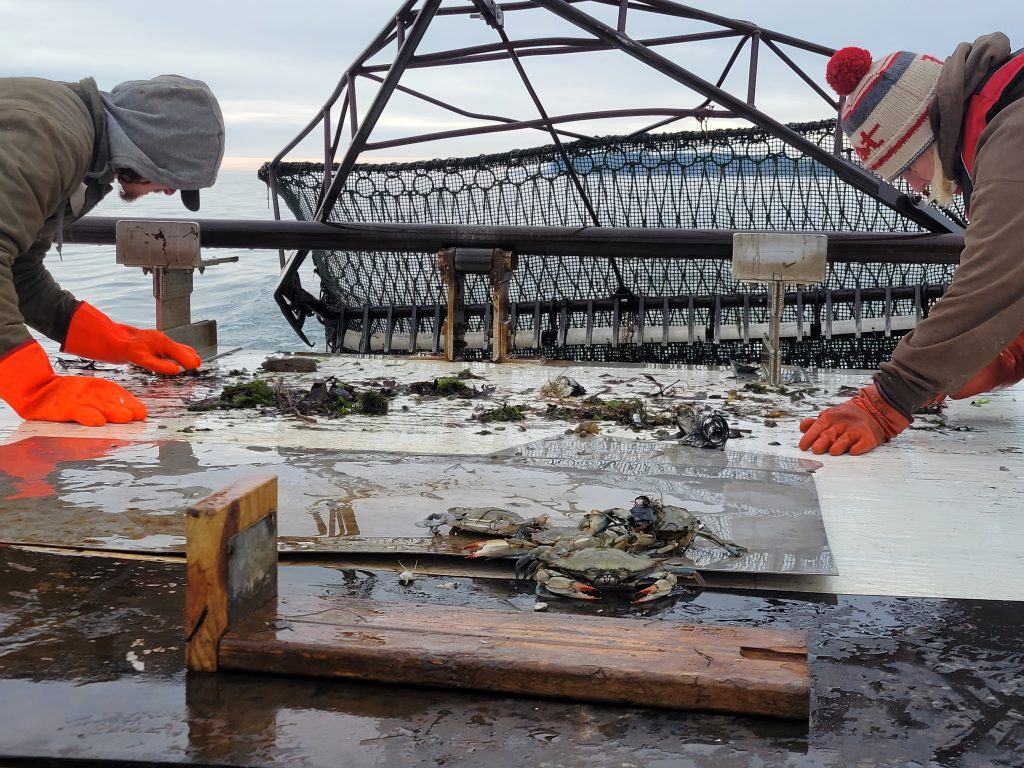
Crew on the winter dredge survey boat sort through blue crabs found in the Choptank River. Data from this survey will be included in the stock assessment. Photo by Joe Zimmermann, Maryland Department of Natural Resources
A team of researchers is preparing for a large-scale analysis of the blue crab population in the Chesapeake Bay that will help guide future management of the crab fishery and investigate factors that influence the animal’s survival and reproduction.
The stock assessment comes as a response to ongoing questions about the regional population of the iconic crustacean, particularly around the recent juvenile recruitment, or the amount of young crabs in the system. This number has been below average for five consecutive years, including the results of the 2024 blue crab winter dredge survey.
Secretary’s Message – January 2024
Welcoming a New Year to expand on our successes at the Department of Natural Resources
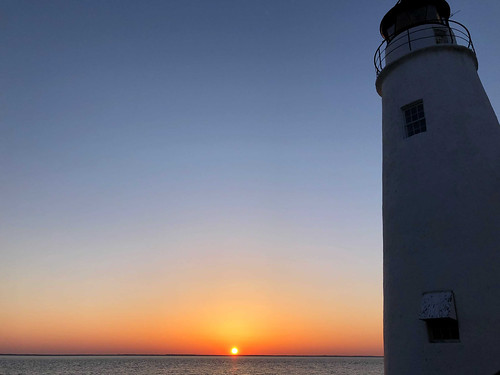
Photo by by Erin Pant, submitted to the Maryland DNR Photo Contest.
We’re kicking off 2024 on a hopeful note at the Department of Natural Resources thanks to positive signs in two important indicators for the health of the Chesapeake Bay–dissolved oxygen and oysters.
One of the primary indicators of the Bay’s overall health is the annual hypoxia measurement – conducted by the Department of Natural Resources and our counterparts in Virginia. Scientists monitor what is called the “dead zone,” which are areas of the Bay with dissolved oxygen levels so low that underwater life such as crabs, fish, and oysters can’t survive. In 2023, hypoxic water in the Bay was measured to be about 0.52 cubic miles, nearly half the historic average of 0.97 cubic miles, and the smallest on record since Bay-wide monitoring began in 1985. Read more…
Maryland’s Muzzleloader Deer Hunting Resumes December 16

Photo by Ranger Elena Gilroy, Maryland Department of Natural Resources
The second half of Maryland’s muzzleloader deer hunting season will reopen Dec. 16 and run through Dec. 30. The first half of the split season was held in October. Hunters may use muzzleloading firearms to harvest sika and white-tailed deer during this time. Read more…
Tools of the Trade: Water Quality Sondes
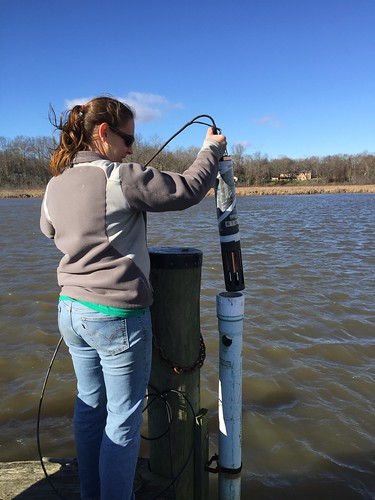
 Department of Natural Resources scientists monitor Maryland’s waters to determine the habitat health for fish, crabs, oysters, and other aquatic organisms. Results from our monitoring programs measure the current status of waterways, tell us whether they are improving or degrading, and help to assess and guide resource management and restoration actions. Information is collected on nutrient (nitrogen and phosphorus) and sediment concentrations, algal blooms, and physical, biological, and chemical properties of the water. While many water samples are taken and analyzed later at a laboratory, modern instruments called water quality sondes allow for the immediate collection of some parameters. Read more…
Department of Natural Resources scientists monitor Maryland’s waters to determine the habitat health for fish, crabs, oysters, and other aquatic organisms. Results from our monitoring programs measure the current status of waterways, tell us whether they are improving or degrading, and help to assess and guide resource management and restoration actions. Information is collected on nutrient (nitrogen and phosphorus) and sediment concentrations, algal blooms, and physical, biological, and chemical properties of the water. While many water samples are taken and analyzed later at a laboratory, modern instruments called water quality sondes allow for the immediate collection of some parameters. Read more…
Chesapeake Bay 2023 Young-of-Year Striped Bass Survey Results Announced

During the annual survey, Maryland Department of Natural Resources fishery managers examine 22 sites located in four major striped bass spawning areas. Maryland Department of Natural Resources photo
The Maryland Department of Natural Resources today announced results of this year’s juvenile striped bass survey, which tracks the reproductive success of Maryland’s state fish in the Chesapeake Bay. The 2023 young-of-year index is 1.0, well below the long-term average of 11.1. Read more…
Maryland Fishing Report – August 2

This young angler caught a spot. Photo by Tom Cole
Spend your time enjoying family and friends, as the end of summer now looms on the horizon. Before they go back to school, load up your young’uns and take them on some summer fishing adventures. There is plenty of fun to be had out there and plenty of fish to keep them busy and build lasting memories.
Striped bass fishing has resumed in Maryland’s portion of the Chesapeake Bay and its tributaries. The July two-week closure, in place to protect the resource during the hottest part of summer, has ended but the Department of Natural Resources still advises you to take caution when targeting striped bass. Please check our weekly Striped Bass Advisory Forecast to make sure weather conditions are safe for the fish you catch and release.
Maryland Fishing Report – July 26
Secretary’s Message – July 2022
Better Days Ahead in Maryland’s Waters
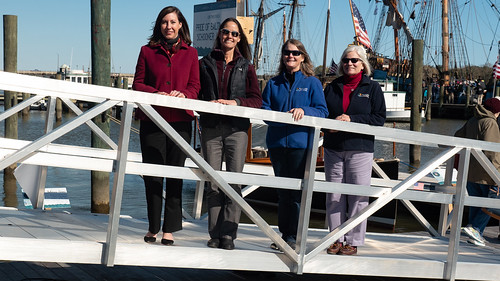
Upgrades at Chestertown Marina were funded by the Waterway Improvement Fund. Photo by Stephen Badger, Maryland Department of Natural Resources
Fifty-six years ago, Maryland’s Waterway Improvement Fund was established to fund waterway improvements, promote recreational and commercial boating, and improve the safety and navigation of Maryland’s waterways for the benefit of the general boating public.
Since its inception this important program has provided more than $300 million in funding for 4,500 projects at public boating access sites across Maryland. If you use a publicly owned boat ramp or marina in our state, there is a good chance that it was funded and is maintained with funding from this program. Read more…
Eyes on the Bay: Wrapping Up Summer 2020
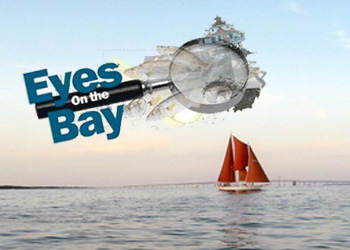 How did Tropical Storm Isaias impact the bay?
How did Tropical Storm Isaias impact the bay?
Hurricane Isaias was a destructive Category 1 hurricane that impacted the Caribbean and the United States’ east coast. How did this storm impact the Chesapeake Bay? See the dissolved oxygen section of this newsletter to find out.
In addition, be sure to check out the “Neighborhood Watch” section below to see how bay fish, crabs, oysters, and grasses responded to the late summer temperatures and patchy rain.
Climb aboard the Eyes on the Bay, toss off the dock lines, and let’s go for a virtual cruise on Maryland’s waters! Read more…
Maryland Fishing Report – September 16
CLICK HERE FOR THE SEPT. 23 MARYLAND FISHING REPORT
September always holds promise for the outdoor enthusiast, as the cooler nights and days are like a sweet whisper in the ear about wonderful things to come. Recreational crabbing is at the season’s peak as blue crabs are plentiful, large, and heavy. Do not miss venturing out to enjoy the bounty of the Chesapeake.
Maryland Fishing Report – Sept. 9

Bruce Strickland caught this blue catfish in the Chaptico Bay’s Bankhead Cove. It was 26.25 inches long and weighed about 10 pounds. Photo by Bruce Strickland.
With warm and dry summer weather through the Labor Day weekend, some anglers targeted the bay’s summer species such as Spanish mackerel and red drum, while others have gone back to targeting striped bass. All areas of the Chesapeake Bay and tidal rivers have reopened for striped bass fishing until Dec. 10 with a size limit of 19 inches and a daily bag limit of one fish per angler.
Targeting invasive species such as blue catfish and northern snakehead remains popular.


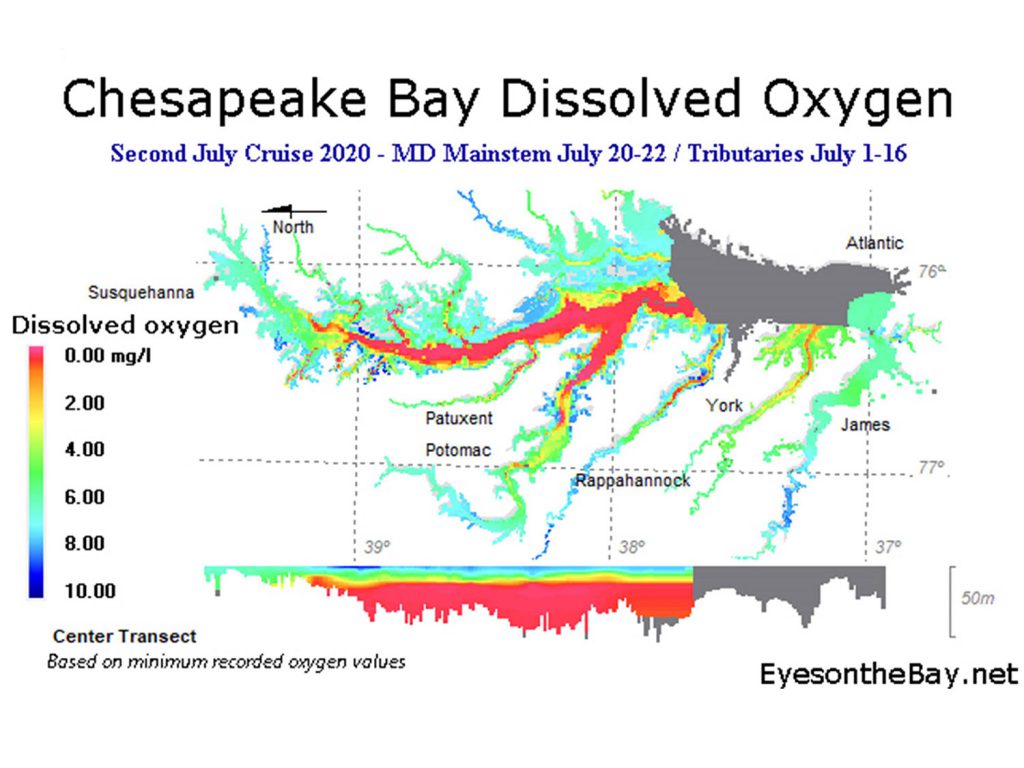
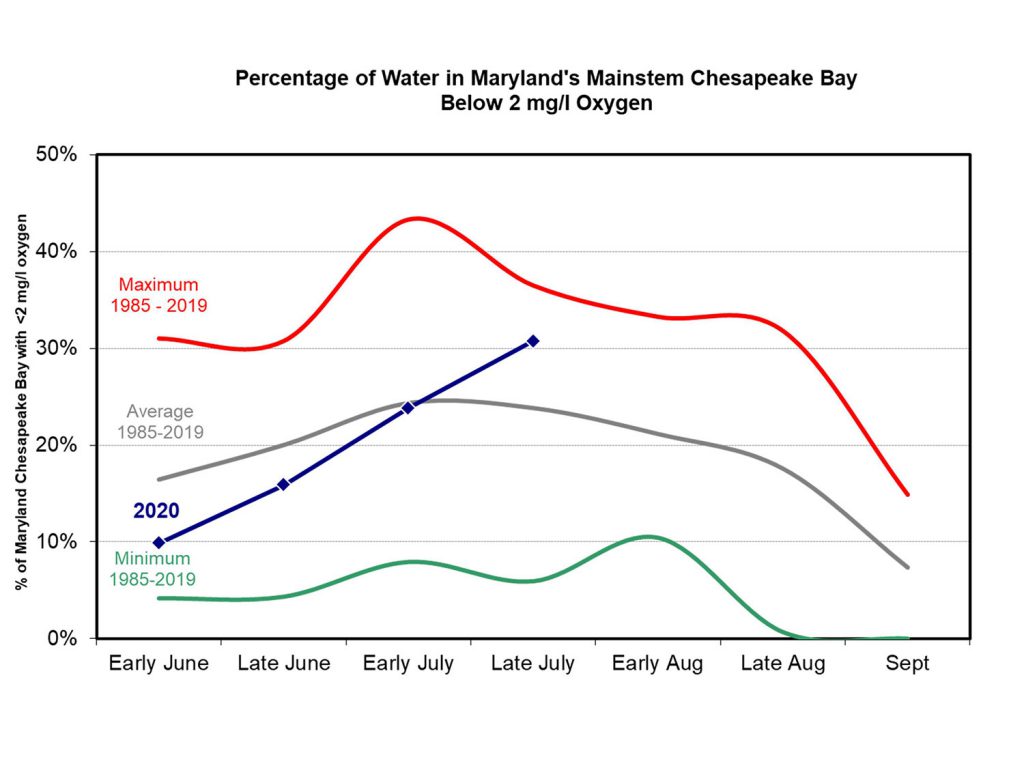
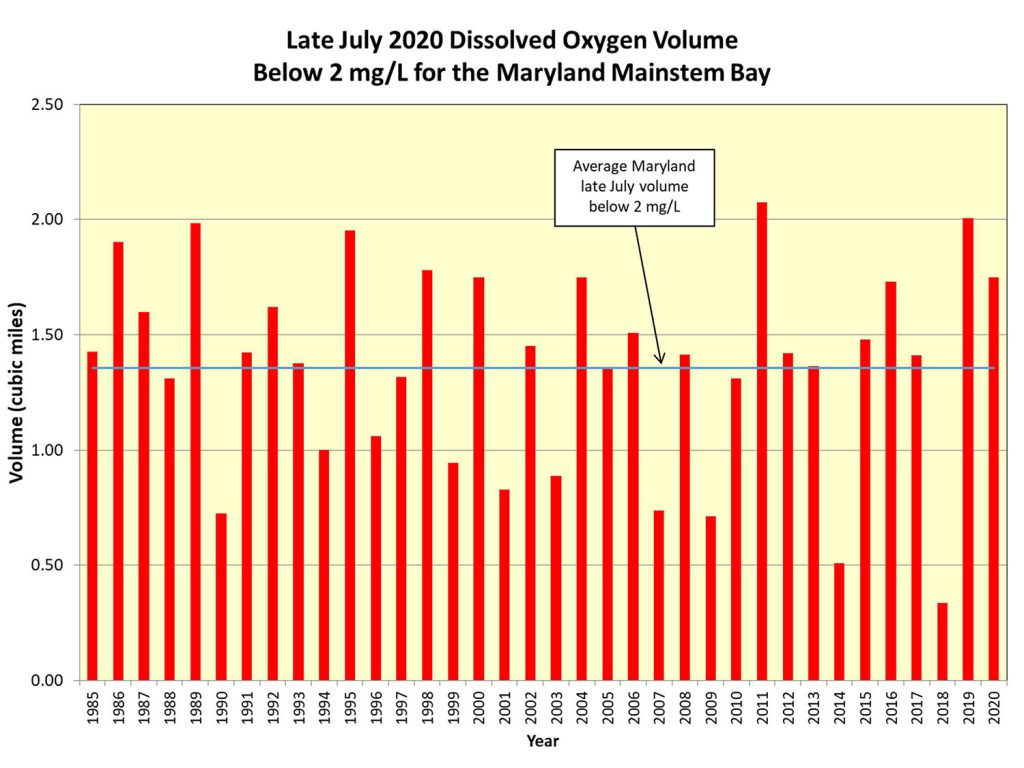
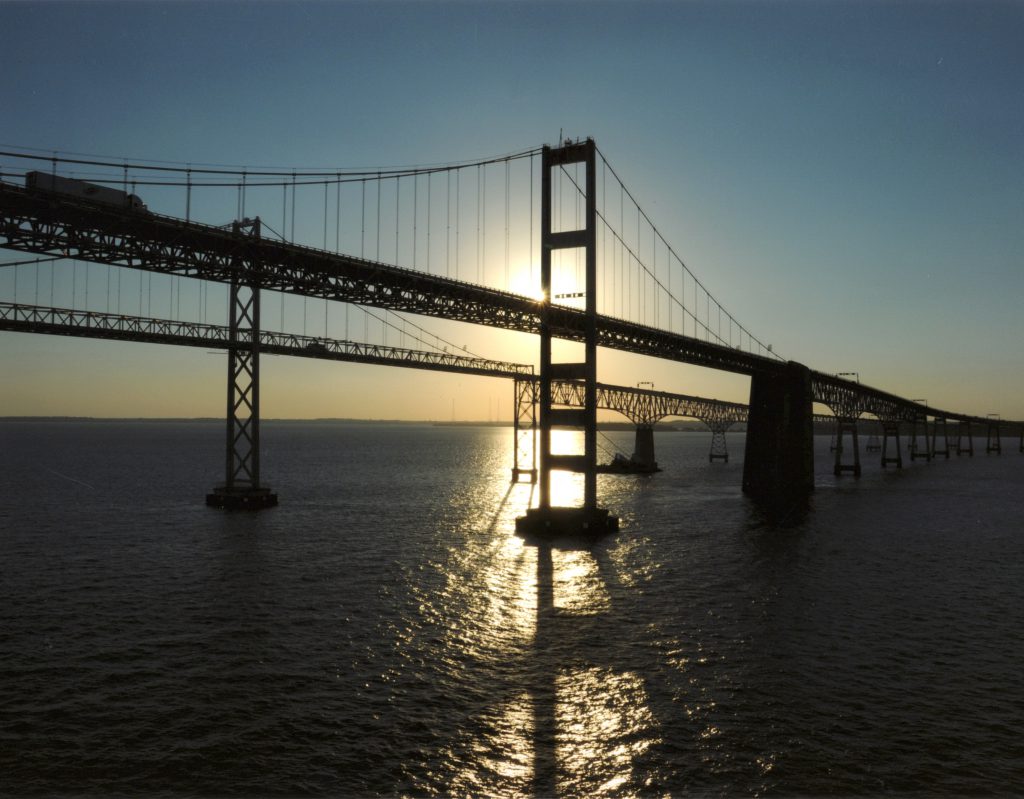



 1-888-373-7888
1-888-373-7888 233733
233733